HPE has added a number of new servers supporting the AMD EPYC 7003 series, including four new designs. HPE’s launch of new ProLiant servers shows us just how challenged the company’s naming convention is at the moment. More practically, it shows HPE greatly expanding the number of AMD-based offerings for this cycle.
HPE ProLiant AMD EPYC 7003 Servers
Two of the servers are based on server designs that we have seen before. For example, we reviewed the HPE ProLiant DL325 Gen10. That was an early AMD EPYC 7002 series machine that was a Naples-based system upgraded for Rome alongside the DL385 Gen10. We actually have a cluster of these Naples systems in our lab.
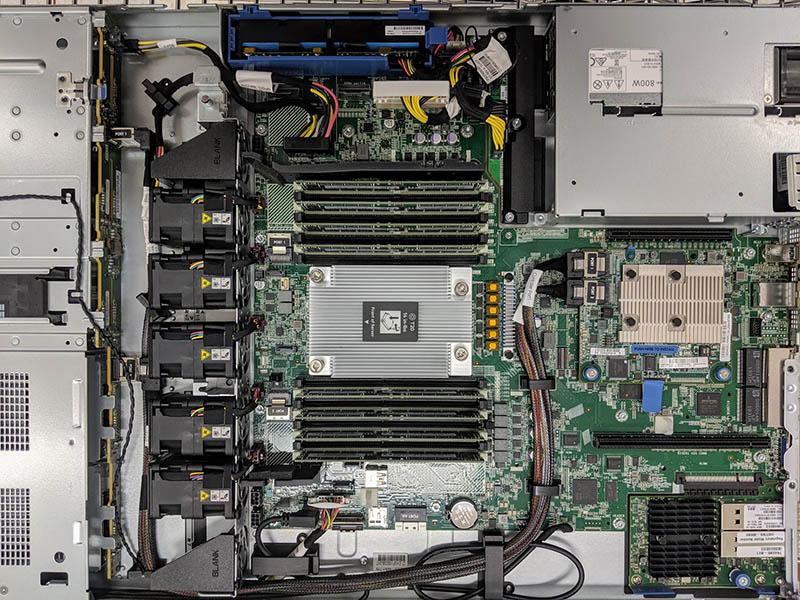
Sometime later, at SC19, we saw the HPE ProLiant DL325 Gen10 Plus and DL385 Plus. These new systems greatly added to the capabilities of the first generation with features such as PCIe Gen4, OCP NIC 3.0 slots, and even unique storage configurations.
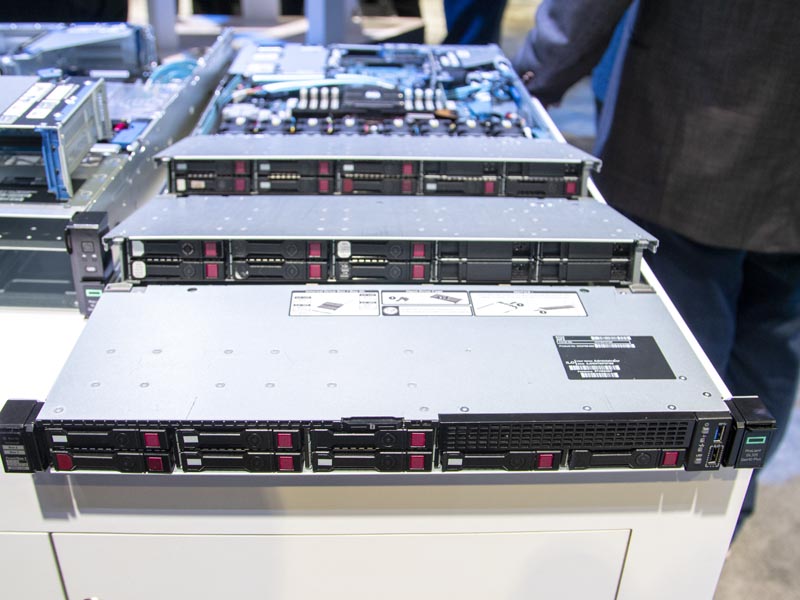
Now, with the AMD EPYC 7003 “Milan” series, we have the HPE ProLiant DL325 Gen10 Plus V2 and ProLiant DL385 Gen10 Plus V2.

The HPE ProLiant DL325 Gen10 Plus V2 is the 1U single-socket offering, as its two predecessors have been. For larger footprints, we get the HPE ProLiant DL385 Gen10 Plus V2 which is the 2U, dual-socket version.
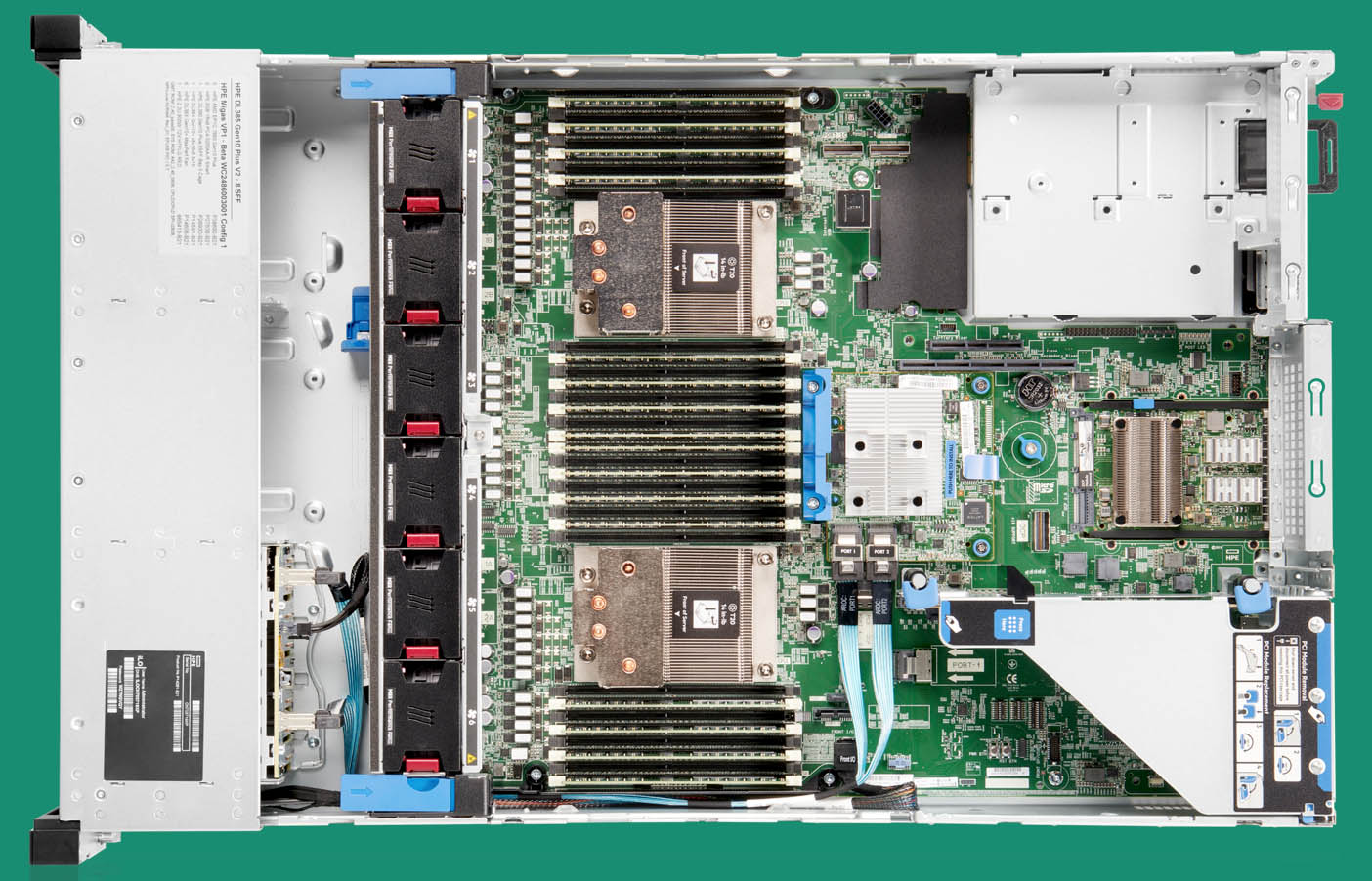
Those two new servers show HPE is trying desperately to maintain parity between its AMD offerings and Intel offerings in terms of naming convention. The DL380 Gen10 is the first and second-generation Intel Xeon Scalable solution launched in 2017 that shares very little with the advanced technologies in the AMD EPYC platforms. The AMD platforms are far enough ahead that they can effectively consolidate any of the 1P/ 2P Intel Xeon Gen10 models 2:1. Still, HPE is giving a nod to its large partner Intel by not making AMD’s platforms a generation ahead using “Plus V2” instead.
While the two new updates to existing systems stick to one CPU per U with 1U 1P and 2U 2P designs, HPE is moving beyond that with the two new platforms. The HPE ProLiant DL345 Gen10 Plus takes a single-socket platform, similar to the DL325 Gen10 Plus V2, and houses it in a 2U chassis. This means we can get more storage and additional PCIe risers for expansion.
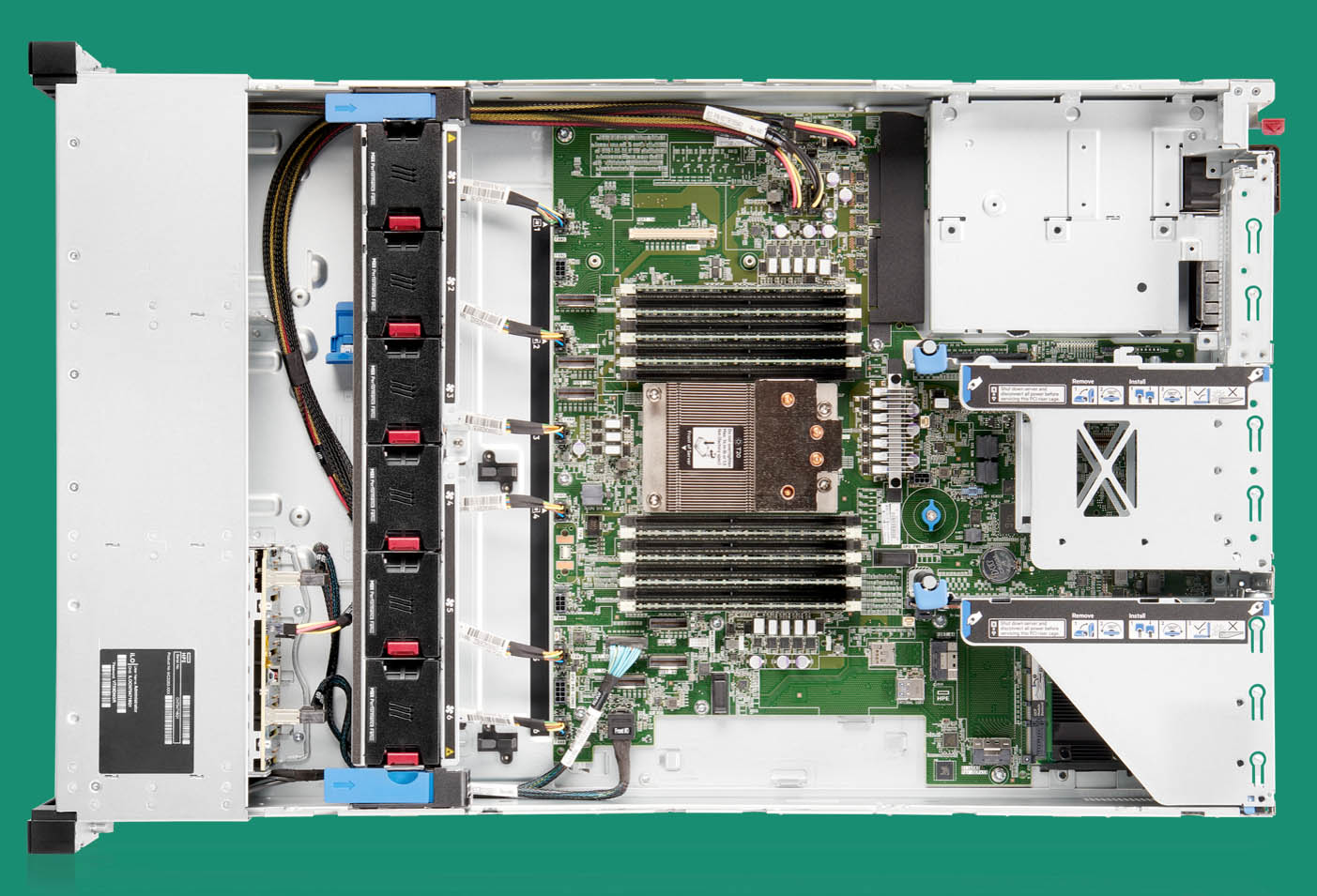
For higher-density, HPE has the new DL365 Gen10 Plus. This is a 1U dual-socket server. This doubles the density of HPE’s previous AMD EPYC rack server platforms and is a direct alternative to the Intel-based DL360 line.
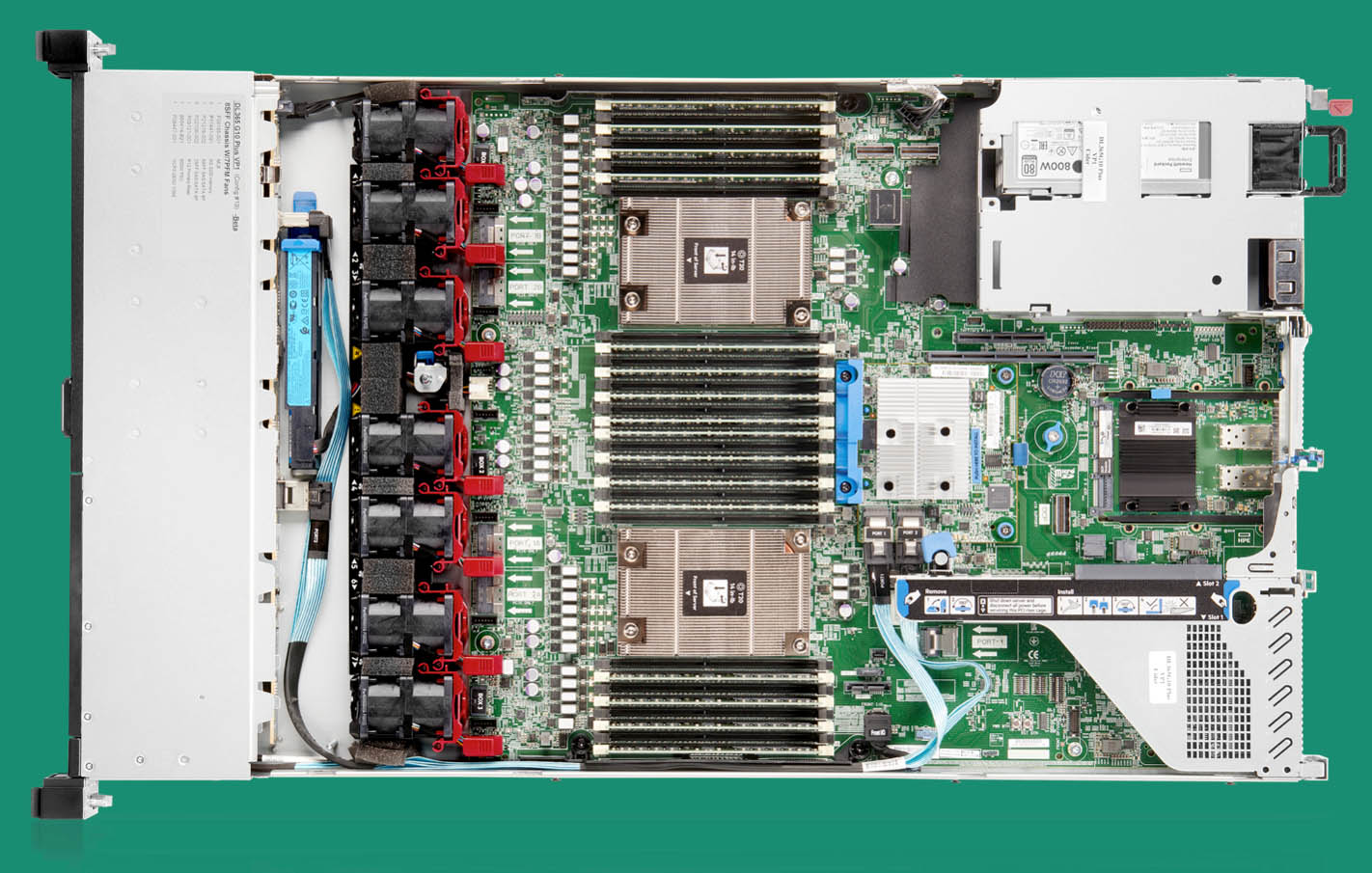
Some of the interesting features one will notice in HPE’s new servers is that the FlexLOM slots have been replaced by OCP NIC 3.0 slots as the company modernizes its platforms and adds PCIe Gen4 support.
Overall, these new servers add new levels of density and flexibility for HPE’s customers looking at AMD EPYC 7003 systems.
Going Beyond Standard Rack Servers
Beyond the new rack server 1U 2P and 2U 1P offerings, we have a number of Apollo and Cray systems. First, we have the HPE Apollo 2000 Gen10 Plus system with the HPE ProLiant XL225n Gen10 Plus server and the HPE Apollo 6500 Gen10 Plus system with either the HPE ProLiant XL675d Gen10 Plus or ProLiant XL645d Gen10 Plus servers.

It is a big deal to see AMD move beyond simple rack servers and into some of the Apollo lines.
Beyond Apollo, we also have the HPE Cray EX supercomputing and HPC platforms. HPE-Cray has two exascale supercomputer contracts using AMD EPYC and one delayed system with the Intel Sapphire Rapids. As such, it is expected the first of the three HPE Cray DoE exascale supercomputers will be based on AMD EPYC.
Final Words
As we have seen with other large vendors in the market, HPE is preparing for more AMD EPYC 7003 demand even on the eve of the 3rd Generation Intel Xeon Scalable (Ice Lake) launch. Since all of the major vendors seem to be adding new AMD Milan systems ahead of the Ice Lake launch, we get a good sense that AMD’s Milan offering will compare favorably to the Ice Lake Xeon generation.

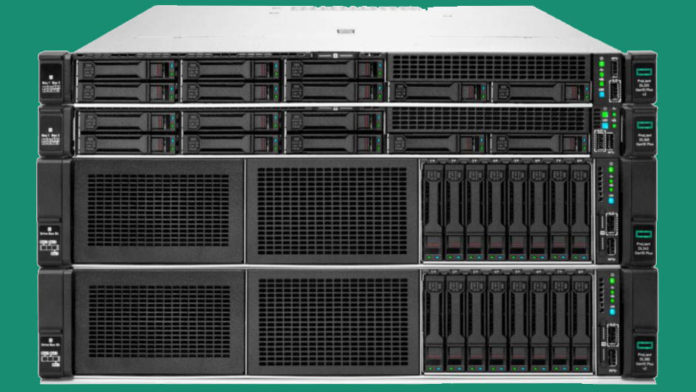



Perhaps you mean ‘Cray’ not ‘Crazy’
I don’t understand the point of the OCP NIC 3.0 cards or slots, even after Googling it. So you have a NIC. They said this standard enables you to use any manufacturer’s NIC. Okay, but you can already do that. It’s pretty standard for NICs to use PCIe, so I don’t understand what this OCP NIC does exactly. Any server can use any NIC already. Any explanation here would be appreciated.
@Joe, OCP 3 is smaller and IIRC it can be slotted out the back without opening the case. A bit nicer to work with than traditional PCIe slots, that’s all I see.
@Cliff – HPE online docs for Apollo are pretty, uh, dense. Clotted with marketing. So, forgive this question please.
Apollo seems to go up to 32 or 64 sockets in 4 socket incrememts. Are the CPU sockets on slot-in cards?
What are the chances we will see a Microserver with an EPYC? :)